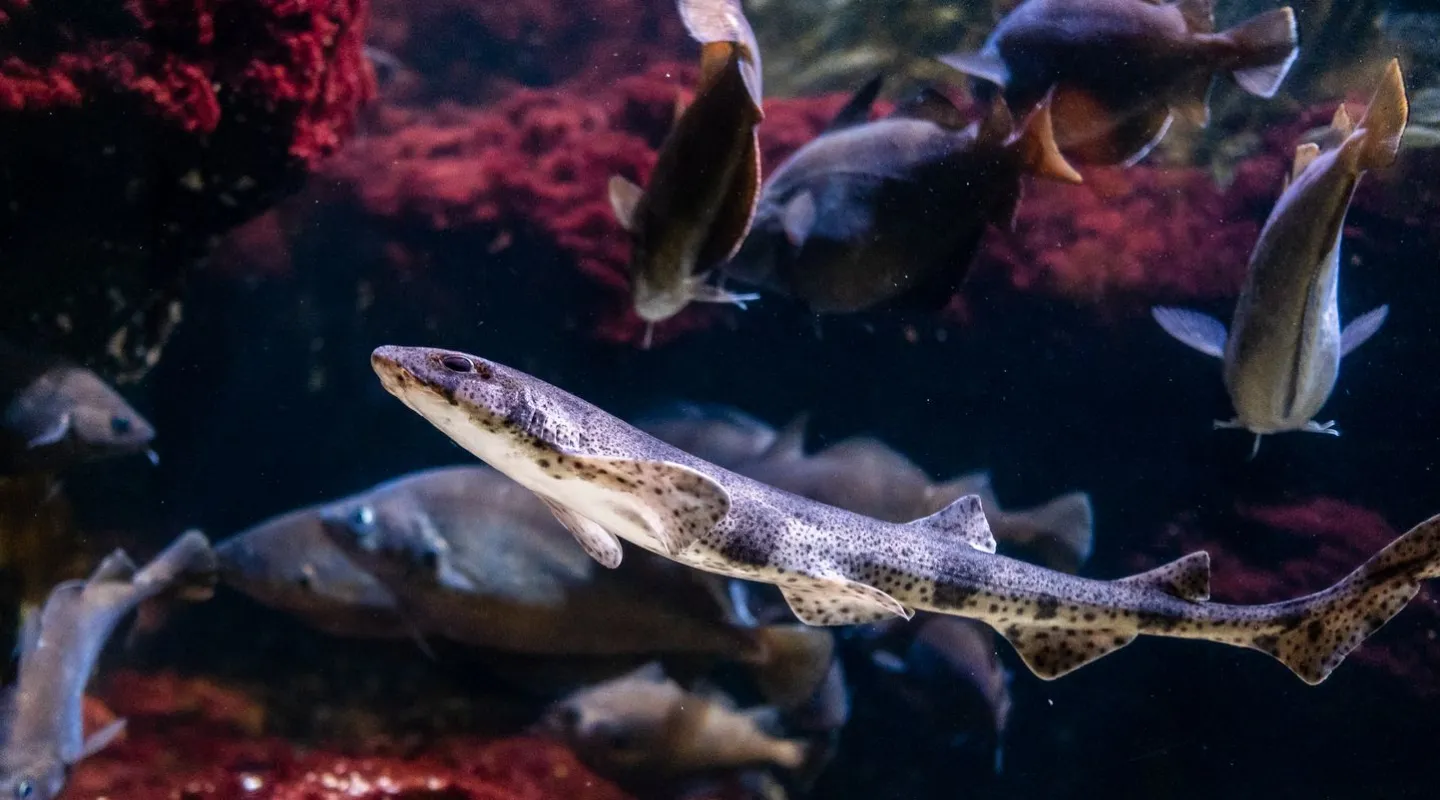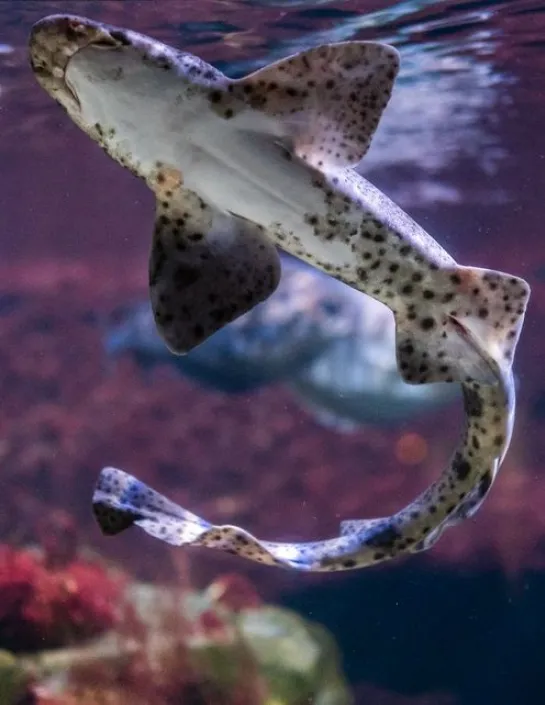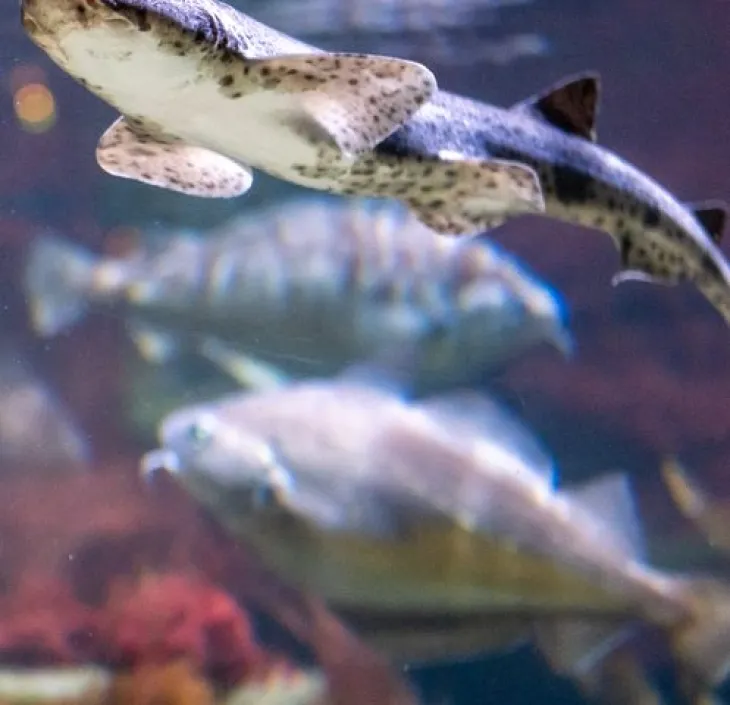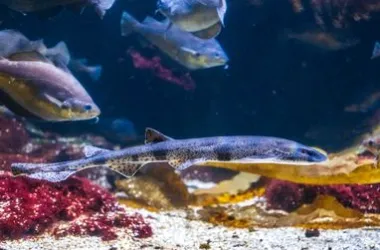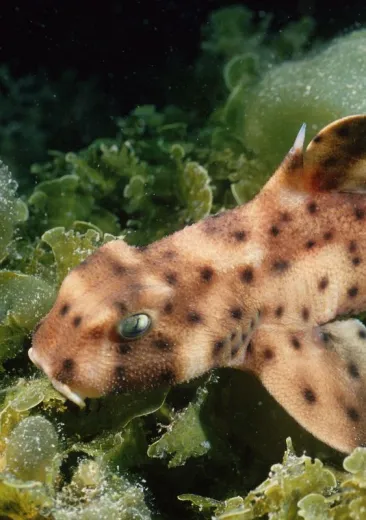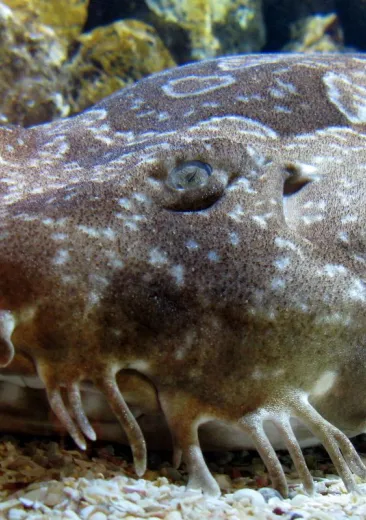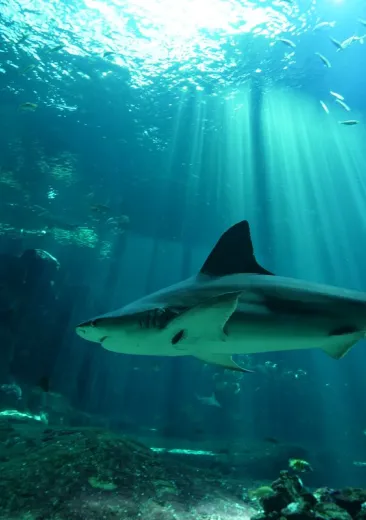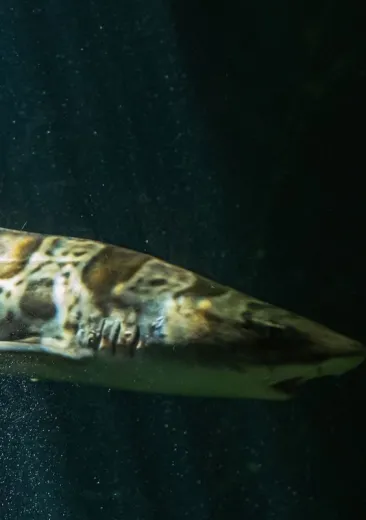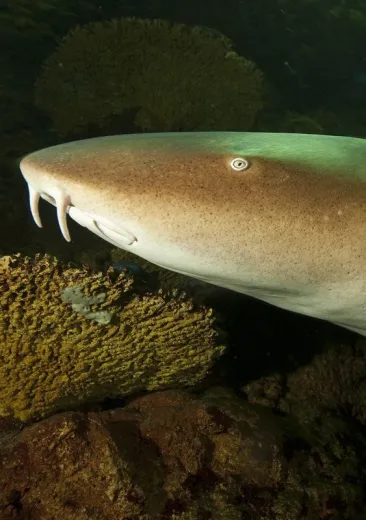Biomimetics: the shark has inspired the creation of some innovative technologies. Its skin has been used as a model for creating antibacterial, hydro/aerodynamic and antifouling clothing; its fins have helped to improve the stability of airplanes thanks to “sharklets” and the shape of its tail has served as inspiration for tidal steam generators.
Where is the animal to be found?
It lives on sandy, gravel or muddy bottoms at depths of 10 to 400 metres.
In the wild, it is often found in the waters of the Eastern Atlantic, from the south of Norway and the Shetland Islands as far as Senegal, and in the Mediterranean and Adriatic seas.
How can it be recognised?
The small spotted catshark, as its name suggests, is both small and spotted. It spends its days resting on sand banks. The small-spotted catshark hunts at night and has a very varied diet. It feeds on gastropod molluscs, cephalopods, crustaceans, worms and small fish.
What is distinctive about it?
It is sold by fishmongers under the generic name of rock salmon.
